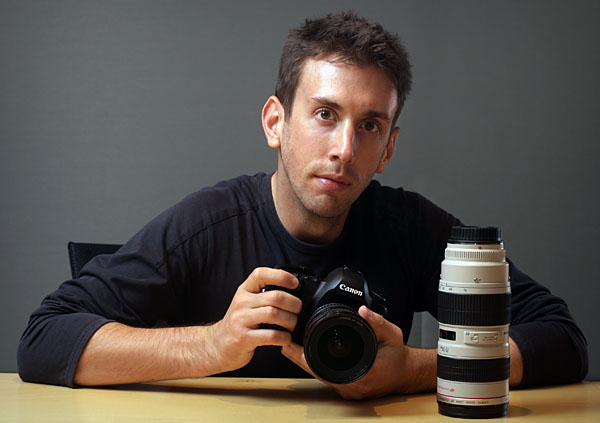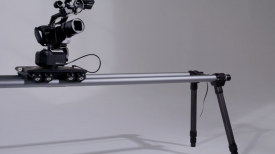I arrived in Hong Kong in May 2009 and did what any photographer in the bargain camera capital of the world would do; go shopping – I was keen to get my hands on a video-capable DSLR. Whilst AFP has a deal with Nikon and supplies staff with Nikon equipment, I also have a basic Canon setup of my own. At the time the Nikon D3s had not been released, though an agency-wide upgrade is imminent.
Hong Kong women shrug off tattoo taboo from Ed Jones on Vimeo.
After getting to grips with the DSLR video function, it wasn’t long before I was proposing a video feature to the Hong Kong bureau chiefs. Newspapers have been at it for a while; photographers already gathering video for two or three years perhaps; a timeframe which increasingly seems to constitute ‘a while’ in the conveyor-belt culture of technology and it’s blossoming relationship with the word ‘obsolete’. AFP has been slower to pick up steam with photographer-generated video, but with good reason: the agency already has a television service capable of producing features and a some select news coverage, and until recently the technology was simply not malleable enough to squeeze into the workflow of AFP’s hundreds of photographers without detriment to the very things that keep it competetive: the speed to meet the neverending deadlines of 24 timezones, and unsurprisingly; cost.
Now thanks to some extremely clever chaps in the upper-echelons of the agency, it is possible to transcode, compress, and transmit HD footage from a DSLR to a desk on the other side of the world as fast as a few photos. My latest video-based endeavour was much less demanding: being a feature I had more time, and as such I decided to provide a text story and photos in addition to the video.
I also wanted to see for myself what it would involve to tackle the feature as a full-on multimedia journalist and be self-sufficient in providing the story. Using around two minutes of footage, 500 words, and maybe six photos or more, I would tell a brief story about the increasing number of conservative Hong Kong women getting tattooed. My equipment was as minimal as possible – I wanted gathering the video to be simple and quick: a DSLR body, a tripod, 70-200mm and 17-40mm lenses, a reflector, and an external sennheiser mic — enough to fit in a small camera bag.

Ambient light in dingy tattoo parlours was a concern, but the reflector and a wide aperture was easily sufficient to keep the interviewees lit. It was the language barriers, the tiny parlours still trading as I conducted my interviews, and actually finding a Hong Kong woman who was conservative enough to be included in the story but liberal enough to talk about her love of ink in English, that proved the toughest challenges.
Unlike shooting news footage where a short period of time must be forecefully divided between gathering photos and video, I found that without these constraints I shot far too much footage; a scattergun approach that meant I ended up with lots of material but not enough real quality. The shooting time of the video comprised of a couple of two-hour video interview and photo-taking sessions, and another two hours to gather extra footage on the street and to return to one of the studios for some action shots.
The editing took a little longer, and was done in small sessions spread inbetween my usual work schedule across five weeks – a delay partly due to the need to comply with the agency’s video style which I was learning for the first time. This meant compiling three different edits of the footage for television and web-based clients. The broadcast version should be able to be re-edited by TV clients, with a package of extra footage in case they should need more choice. No cut-away shots during an interview, and no overlapping audio called for less creative freedom, but essentially retains flexibility for whoever wants to use it. The web version allows much more creativity in the edit so that the product can be directly uploaded to websites with the minimum of intervention. On top of all of this is I have to submit a heavily detailed shotlist, a document explaining when and where all the included shots were taken, and details of the interviewees. The shotlist also includes the text story and the voiceover script as a reference for clients.
Once finished, it was extrememly satisfying to see the story, photos and the video appearing on websites and in publications around the world, and whilst the feature is not as polished as I would have liked, I will refine my approach for future stories – for which I already have a few ideas.
Upon reflection, I feel increasingly fortunate that it is the tools of our trade that are now capable of such attention-grabbing video results – the opportunity to continue to visually record the world firmly cemented in the hands of photographers. From weather features to war stories, the ability and the need to implement video segments into our workflow is here. At AFP photo editors are already handling video alongside pictures. From now on, the challenge for news photographers will be to gather and transmit footage fluently and with the minimum of hassle…and then let the desk worry about it.





